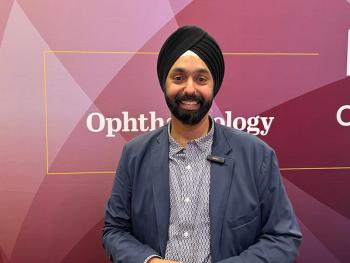
Wavefront-guided LASIK: bigger increases in corrected/uncorrected VA
WFG LASIK achieved better 25% contrast acuity gains in corrected/uncorrected distance VA
Wavefrontoptimized (WFO) and wavefront-guided (WFG) LASIK using a high-resolution aberrometer both provided excellent clinical outcomes and predictability values. WFG LASIK achieved better 25% contrast acuity, gains in corrected distance and uncorrected distance visual acuities.
Reviewed by Edward E. Manche, MD
Advances continue in the visual improvements and the quality of vision achieved after LASIK. A comparison of wavefront-optimized (WFO) and wavefront-guided (WFG) LASIK using a high-resolution aberrometer found excellent clinical outcomes and predictability values with both technologies.
WFG LASIK fared better than WFO LASIK with better improvements in three parameters: 25% contrast acuity, gains in corrected distance VA (CDVA), and uncorrected distance VA (UDVA). Edward Manche, MD, and co-investigator Joshua Roe, MD, undertook a prospective study in which each participant was randomized to treatment with WFG LASIK in one eye and WFO LASIK in the fellow eye.
The instruments used to perform WFG L ASIK were the CustomVue S4 IR excimer laser and the iDesign aberrometer (Johnson & Johnson Vision) and for WFO LASIK the Alcon Allegretto Eye-Q 400 Hz excimer laser (Alcon).
The Intralase iFS 150 femtosecond laser (Johnson & Johnson Vision) was used to create all flaps. Patients were asked to complete a validated questionnaire preoperatively and postoperatively 1, 3, 6, and 12 months to survey the quality of vision, Dr. Manche recounted.
He is Director of Cornea and Refractive Surgery and Director of Research, Cornea and Refractive Surgery, Byers Eye Institute, and Professor of Ophthalmology, Stanford University School of Medicine, Stanford, CA. One hundred patients (200 years) were included in the study.
The mean patient age was 33.57 ± 7.82 (range 21-55); 52% of patients were women. The baseline characteristics of both groups of eyes were well matched.
Study results
The investigators reported that on postoperative day one all 100 eyes in the WFG and WFO groups had 20/32 or better UDVA, 97% and 98%, respectively, had 20/25, and 91% and 85%, respectively, had 20/20. At the 20/12.5 level, WFG LASIK showed better results with 36% achieving that level compared with 29% in the WFO group.
At 12 months postoperatively, similar results were seen in both groups in 97 eyes that completed the examination. The respective percentages of eyes in the WFG and WFO groups were as follows: 99% and 97% had 20/32, 97% and 97% had 20/25, and 91% and 92% had 20/20 and 71% and 76% had 20/16, and 36% and 29% had 20/12.5, and 2% and 0% had 20/10.
At 12 months, measurement of the low-contrast CDVA showed that 47% and 54% of patients in the WFG and WFO groups, respectively, had 20/50 vision.
There was no statistically significant difference in predictability, with 94.0% achieving ±0.5 diopter (D) of the targeted refraction in the Allegretto WFO group compared with 92.0% with the iDesign WFG group. The respective percentages for ±1.0 D were 97% and 99%
The results of the quality-of-vision questionnaire indicated that there were no significant differences at any time point and, in any parameters, (frequency, severity, and bothersomeness of symptoms) analyzed between the two technologies.
The WFG group had a significantly (P=0.04) better mean change in the CDVA compared with the WFO group. Sixty-five percent of eyes gained one or more lines in the WFG group compared to 53% in the WFO group.
The WFG group gained 0.8 line compared with 0.6 line in the latter. The study showed excellent clinical outcomes and predictability in both groups, identical self-reported quality of vision in the two groups, and no difference in the induction of higher order aberrations between the two groups. However, the WFG group had more gains in 25% contrast acuity in the WFG group, CDVA, and UDVA at the 20/12.5 level.
Disclosures:
Edward E. Manche, MD
E: [email protected]
Dr. Manche reported that he is a consultant to Johnson & Johnson Vision and has performed sponsored research for Alcon and J & J Vision. Dr. Roe has no financial conflicts to report.
Newsletter
Don’t miss out—get Ophthalmology Times updates on the latest clinical advancements and expert interviews, straight to your inbox.















































.png)


